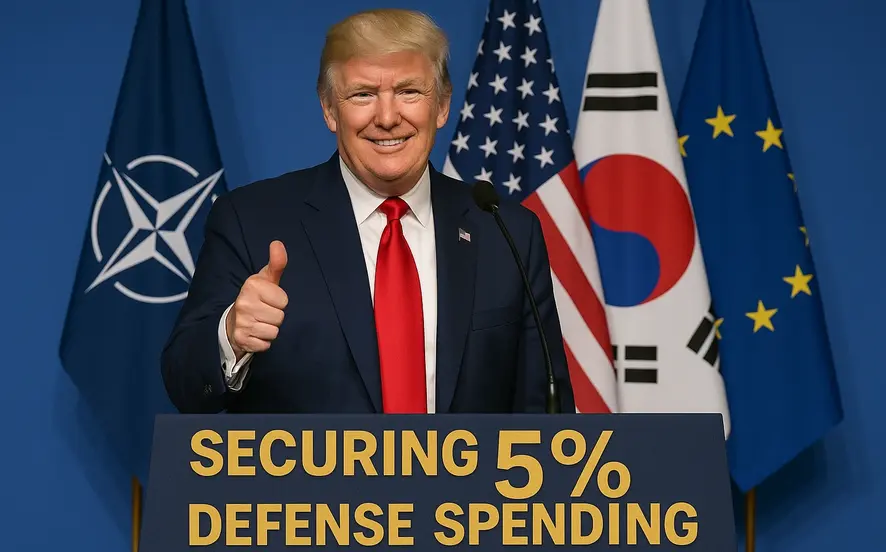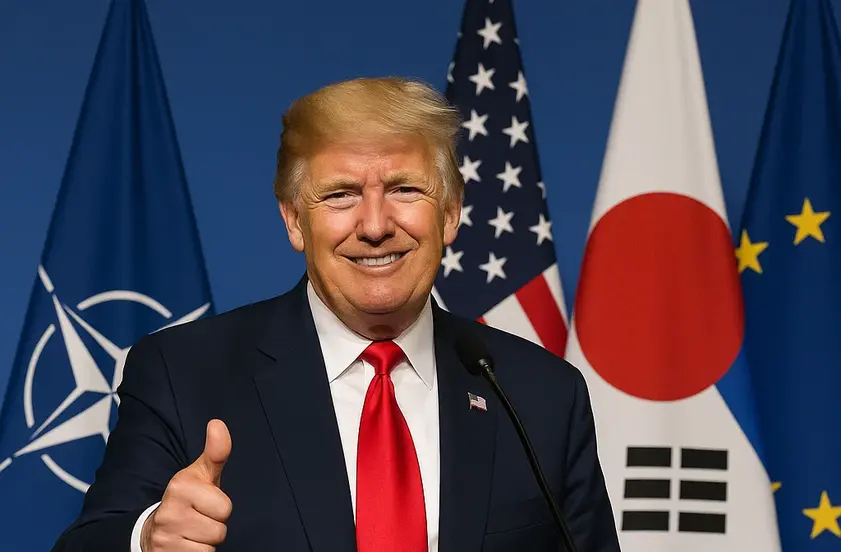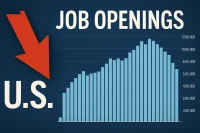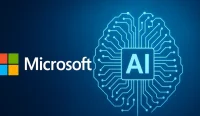In today’s rapidly evolving geopolitical landscape, NATO defense spending increases have become more crucial than ever for maintaining global security. President Trump’s appearance at the NATO summit in the Netherlands follows his diplomatic success in brokering a ceasefire between Israel and Iran, marking significant shifts in both Middle Eastern dynamics and transatlantic relations. This comprehensive analysis explores the strategic implications of Trump’s NATO diplomacy, European reactions, and what increased defense commitments mean for global security architecture.
Trump’s Diplomatic Double Play: Middle East and NATO
President Trump’s arrival at the NATO summit comes on the heels of what he has branded the “12-Day War” between Israel and Iran. This strategic sequencing reveals a calculated approach to international diplomacy that leverages success in one arena to build momentum in another.
From Middle East Ceasefire to NATO Commitments
President Trump’s comments at the NATO summit directly connected his Middle East diplomatic success to his NATO agenda: “We are with them. There are very big things to announce today.” This statement underscores how NATO defense spending increases are being positioned as part of a broader strategy of American diplomatic re-engagement.
The Significance of the 5% Commitment
“I have been asking them to go up to 5% for a number of years. And they are going up to 5%. That’s a big from 2%. And a lot of people didn’t even pay the 2%,” President Trump stated, highlighting what appears to be a significant breakthrough in his long-standing campaign to increase NATO defense spending. This represents a potential doubling of the previous commitment threshold and would mark a historic shift in alliance funding if implemented.
Strategic Timing After Iran Strikes
The President’s comparison of US strikes on Iran to the bombs dropped on Japan to end World War II—stating that both “ended wars”—signals an attempt to project decisive leadership ahead of crucial NATO negotiations. By claiming Iran’s nuclear program has been “set back by decades,” Trump establishes a narrative of strength that reinforces his position in pushing for NATO defense spending increases.
NATO’s Evolution Under Pressure
The alliance is showing signs of adaptation in response to both external threats and internal pressure for reform, with NATO defense spending increases at the center of this evolution.
Secretary General’s Strategic Approach
NATO Secretary General Mark Rutte’s text to President Trump reveals a sophisticated diplomatic strategy: “Donald, you have driven us for a really important moment for Europe and the world. You will achieve something no American President in decades could get done. Your honor is going to pay in a big way as they should and it will be your win.” This personal outreach acknowledges Trump’s influence while framing NATO defense spending increases as a shared victory.
The Ukraine War’s Impact on NATO Priorities
According to Secretary of State Marco Rubio’s comments, the conflict in Ukraine has fundamentally altered NATO’s strategic calculus. The war has “exposed so much vulnerability” and created “an eagerness for these countries to ramp up their own defense production” to avoid situations where they “could run out of artillery.” These practical concerns have made NATO defense spending increases more palatable to European leaders who previously resisted such commitments.
From Criticism to Collaboration
The tone at the NATO summit represents a significant shift from President Trump’s first term, when he frequently criticized alliance members for not meeting their 2% GDP defense spending obligations. Now, as the Secretary General credits Trump for making NATO “a stronger, fairer alliance,” there appears to be greater recognition of the legitimacy of his demands for NATO defense spending increases.
European Security Calculations in a Changing World
European nations are reassessing their security priorities in light of multiple threats, with implications for NATO defense spending increases and strategic autonomy.
Russia as the Central Concern
Despite the focus on procedural and financial matters, “concerns about Russia underpin all the conversations happening here.” The alliance’s condemnation of Russian aggression reflects a shared threat perception that has made NATO defense spending increases more urgent for European members who previously viewed such commitments with skepticism.
The Balancing Act with Ukraine
President Trump’s scheduled meeting with Ukrainian President Zelenskyy highlights the complex dynamics at play. While supporting Ukraine against Russian aggression, the US approach under Trump appears to prioritize getting “conversations going in the right place” rather than automatically implementing all sanctions requested by Ukraine. This nuanced approach affects how NATO defense spending increases will be allocated and prioritized.

Defense Production Capacity
A key aspect of NATO defense spending increases involves not just higher budgets but strategic investments in defense industrial capacity. European nations have recognized the need to “ramp up their own defense production” to address vulnerabilities exposed by the Ukraine conflict. This represents a shift from dependency on US capabilities toward greater European self-sufficiency within the NATO framework.
The Transatlantic Relationship Reimagined
The dynamics at the NATO summit suggest an evolving relationship between the United States and its European allies, with implications for global security architecture.
From Burden-Sharing to Strategic Investment
The language around NATO defense spending increases has shifted from accusations of free-riding to recognition of mutual strategic interests. As European nations face the reality of security threats on their continent, defense spending is increasingly framed as an investment in their own security rather than a concession to American demands.
NATO’s Continued Relevance
Despite predictions of NATO’s obsolescence, the alliance has demonstrated remarkable adaptability. The push for NATO defense spending increases reflects a recognition that NATO remains “critical to giving NATO the power that it has always had.” European leaders “do not want to see the President or the United States back away from this alliance” and are “doing everything they can to basically accommodate President Trump.”
The Power of American Military Capability
Recent US military action in Iran has reinforced European perceptions of American power as an essential component of their security. The demonstration of “military might in Iran” has reminded European leaders of the value of the US security guarantee, making them more receptive to arguments for NATO defense spending increases as their contribution to maintaining this relationship.
You might also consider exploring these related career paths:
- Defense policy analyst
- NATO affairs specialist
- Transatlantic relations expert
- Defense procurement specialist
- Security studies researcher
- International organization liaison
🚀 Explore Top Jobs on WhatJobs
Looking for your next career move?
Discover trending opportunities in Defense Policy, International Relations, Security, and Research—fields that are vital to today’s global stability and diplomacy.
WhatJobs helps you stay ahead by connecting you with in-demand roles that shape global security and transatlantic cooperation.
👉 Browse all top security and policy jobs now — and shape the future of global defense.
The Future of NATO Under Increased Funding
The potential shift to 5% GDP commitments for defense spending would represent a transformative moment for NATO, with far-reaching implications for global security dynamics.
Reinvigorated European Defense Capabilities
Increased funding could accelerate European efforts to address critical capability gaps that have plagued the alliance for decades. From air defense systems to strategic lift capacity, NATO defense spending increases could translate into tangible improvements in the alliance’s ability to project power and deter aggression.
Industrial and Technological Implications
The defense industrial base in both North America and Europe stands to benefit significantly from sustained NATO defense spending increases. This could drive innovation in key areas like artificial intelligence, hypersonic weapons, and cyber capabilities, potentially narrowing the technological gap with competitors like China and Russia.
The Challenge of Sustainability
While the commitment to higher spending levels represents a diplomatic victory, the long-term sustainability of NATO defense spending increases remains an open question. European economies facing demographic challenges, energy transitions, and other fiscal pressures will need to balance defense commitments with domestic priorities—a tension that has historically limited NATO’s ability to maintain spending targets.
FAQ About NATO Defense Spending Increases
What is the significance of NATO members potentially committing to 5% defense spending?
The potential commitment to 5% of GDP for defense represents a historic shift in NATO defense spending increases. This would double the previous 2% target that many members struggled to meet. If implemented, it would significantly enhance NATO’s collective capabilities and reduce the disproportionate burden currently carried by the United States, which has been a longstanding point of contention within the alliance.
How has the Ukraine war changed European attitudes toward NATO defense spending?
The conflict in Ukraine has fundamentally altered European perceptions of security threats and exposed vulnerabilities in defense capabilities. This has created greater receptiveness to NATO defense spending increases as European nations have witnessed the practical consequences of underinvestment, including concerns about running out of artillery and other critical supplies. The war has made abstract security threats concrete and immediate for European publics and policymakers alike.
What specific capabilities might NATO prioritize with increased defense spending?
With NATO defense spending increases, the alliance is likely to prioritize several critical capability areas: air and missile defense systems to counter threats from Russia; enhanced logistics and mobility to rapidly reinforce vulnerable eastern members; cyber defense capabilities to address hybrid threats; and increased stockpiles of ammunition and equipment to ensure sustained operations. Additionally, investments in next-generation technologies like AI and autonomous systems will likely feature prominently.
What economic impacts might result from substantial increases in NATO defense spending?
Significant NATO defense spending increases would have substantial economic effects, including growth in defense-related industries, potential job creation in manufacturing and high-tech sectors, and possible innovation spillovers to civilian applications. However, these benefits must be weighed against opportunity costs, as resources directed to defense cannot be used for other public priorities like healthcare, education, or green energy transition.
How might Russia and other competitors respond to NATO’s increased defense spending?
Russia and other strategic competitors are likely to view NATO defense spending increases as provocative and may respond with their own military buildups or asymmetric measures. This could potentially trigger a new arms race or increased tensions. However, proponents argue that credible deterrence through enhanced capabilities is ultimately stabilizing by removing incentives for aggression and creating conditions for negotiation from a position of strength.




